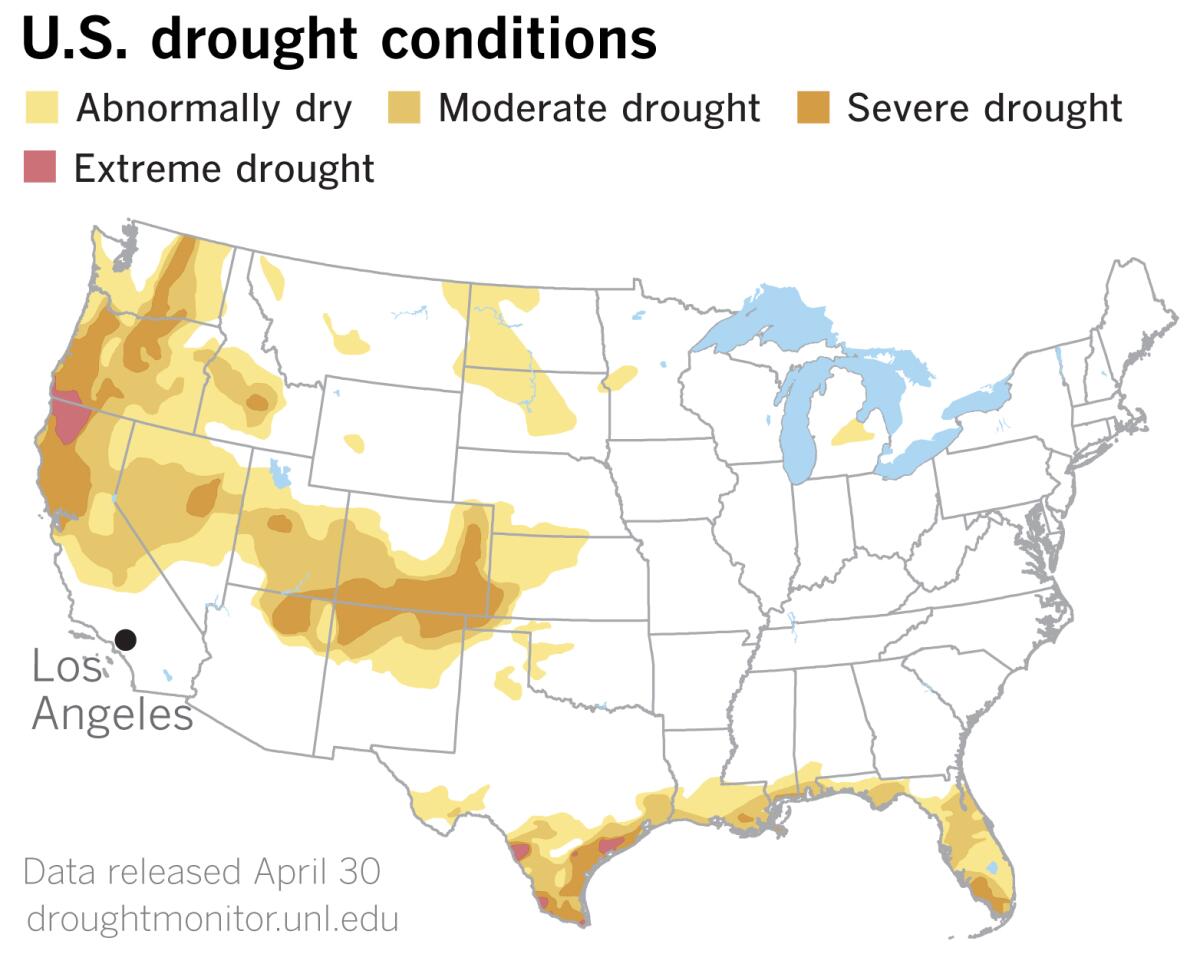Drought makes early start of the fire season likely in Northern California

- Share via
Expanding and intensifying drought in Northern California portends an early start to the wildfire season, and the National Interagency Fire Center is predicting above-normal potential for large wildfires by midsummer.
Mountain snowpack has been below average across the High Sierra, southern Cascades and the Great Basin, and the agency warns that these areas need to be monitored closely as fuels continue to dry out. The agency also cites a warm, dry pattern in Oregon and central and eastern Washington, and assigns all of these areas a higher-than-average likelihood of wildfires in July.
Precipitation was below normal in April, and the high-elevation snowpack in Northern California peaked in early April at 60-70% of normal snow-to-water content. But with a warmer, drier May predicted, the snowpack is expected to be gone by early June, several weeks earlier than normal. The outlook calls for normal to slightly warmer- and drier-than-average conditions through August, resulting in dry fuel conditions.

The most recent Drought Monitor data released on Thursday show conditions throughout Central and Northern California, northern Nevada, most of Oregon and central and eastern Washington. Drought conditions extend east through the Four Corners region and into northwestern Kansas.
Much of northwestern California and western Oregon is in severe drought, and a patch of northwestern California and southwestern Oregon is considered to be in extreme drought.
The National Interagency Fire Center map shows a below-normal potential for major wildfires along a coastal strip — indicated with green — from San Diego to the Bay Area, in recognition of late season rains. Some Southern California locations are at or above normal for the rainfall season, but heading north along the coast, many are below. For example, Santa Maria is at 77% of normal for the season as of May 1. San Francisco stands at 49%.
Climatologist Bill Patzert finds this misleading. Referring to the map, he says, “The rainfall this winter has just fueled up this coastal zone. Give these areas a month to desiccate and the green will be red.”
Patzert wonders about adding an early start of the fire season to the public health and economic hardships already associated with the coronavirus outbreak. “How do you fight a wildfire in a pandemic?” he wonders, citing the close quarters of firefighters in the field and people forced to shelter in evacuation centers. “It’s frightening to consider. I’m sure firefighters are experiencing high anxieties anticipating another long fire season.”
“Rather than May gray and June gloom, which tends to temper our low humidity and high temperatures in early summer, high pressure seems to be building over the West, which will dry us out and promote an early fire season,” said Patzert. “This is a pattern that has become more frequent in past decades, leading to earlier and longer-lasting fire seasons.”
More to Read
Sign up for Essential California
The most important California stories and recommendations in your inbox every morning.
You may occasionally receive promotional content from the Los Angeles Times.














